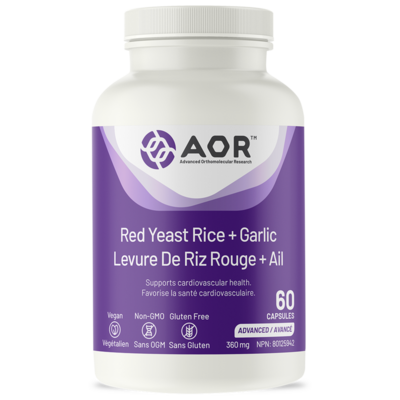Benefits
- Provides niacin (nicotinic acid) as intermediate release form
- High potency dosing, with 475 mg nicotinic acid, 75 mg Sytrinol, and 62.5 mg Hibiscus sabdariffa per tablet, all clinically relevant dosages
- Suitable for vegetarians and vegans
A unique combination of cholesterol lowering agents, Choles-Restore AAC targets atherogenic lipids as well as endothelial health, with ingredients proven to lower the risk of cardiovascular events. Niacin is a pleotropic molecule, reducing levels of all atherogenic particles containing apoB, including LDL-C, triglycerides, and Lp(a). Choles-Restore AAC also contains Sytrinol, a unique combination of citrus flavonoids, palm tocotrienols and Hibiscus sabdariffa.
Take 1 tablet per day with a meal or as directed by a health care professional.
Serving Size: 1 Tablet
Amount Per Serving
Niacin … 500mg
(nicotinic acid)
Calcium … 133mg
(dicalcium phosphate)
Sytrinol® … 75mg
Orange Extract … 67.5mg
(Citrus aurantium or Citrus nobilis)(peel)(24.3 mg polymethoxylated flavones)
Palm Extract … 62.5mg
(Elaeis guineensis)(seed oil)(1.125 mg tocotrienols) 7.5 mg Hibiscus sabdariffa 4:1 Extract (flower)
(Standardized to contain 6% anthocyanins)
Other ingredients
Dicalcium phosphate dihydrate, modified cellulose, microcrystalline cellulose, coating (carbohydrate gum [cellulose], glycerin), magnesium stearate (vegetable grade).
Contains no artificial colors, preservatives, or sweeteners; no dairy, sugar, wheat, gluten, yeast, soy, egg, fish, shellfish, animal products, salt, tree nuts, or GMOs. Suitable for vegetarians/vegans.
Sealed for your protection. Do not use if seal is broken. For freshness, store in a cool, dry place.
Most people should not experience flushing when using this product. However, a few individuals sensitive to nicotinic acid may experience some flushing of the skin that is generally mild and transient. Safety at therapeutic doses has not been established during pregnancy or lactation. Consult a health care professional prior to use if you are pregnant or breastfeeding. Do not exceed the recommended dose except on the advice of a health care professional. All forms of niacin have been associated with hepatotoxicity. This occurs at a significantly lower frequency with the extended and intermediate release forms than the sustained release, yet liver function tests should be monitored. Niacin therapy should be avoided in patients with either peptic ulcer disease or gout and/or elevated serum uric acid levels, and used with caution in those with renal impairment. Niacin has been shown to be safe for diabetics, though marginal but non-significant and non-lasting elevations in serum glucose have occurred, suggesting monitoring of glycemic control may be desirable. Do not take on an empty stomach. Keep out of reach of children.
Favorable effects have been well-documented when used in conjunction with statin drugs for dyslipidemia, and may allow for reduced dosing of statins. Antioxidant supplementation (vitamins E and C, beta-carotene, and selenium) may blunt the favorable effect of niacin on HDL levels. Evidence exists for a synergistic effect on glycemic control when used with chromium.








